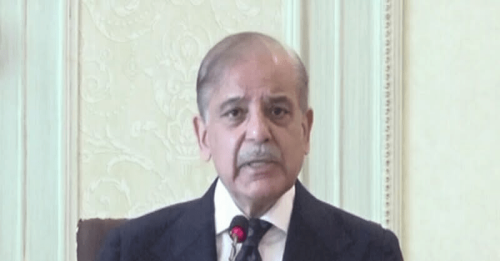WHILE seated at the Sightseeing Lahore bus station at the Punjab Stadium, still referred to as the Gaddafi Stadium by many, one overhears several people vocalising their relief at the sliver of sunshine on a particularly cold morning. The weather matters today, as the 50-odd people about to board the double-decker bus all have tickets for the upper deck, and the chill is worrisome.
As we begin to line up to board, another tour bus enters the premises. Patriotic songs are blaring from it and dozens scramble off, taking selfies in front of the festively decorated bright red bus, while others fill comment cards politely distributed at the end of the journey.
Yeh Lahore hai. A Lahore with different millennia having seeped into its very tangible and intangible framework. A Lahore that has seen progress at blinding speed which has delighted some while compelled many to raise issue with its loss of cultural stock. A Lahore full of contradictions.
And taking us onto a tour of this Lahore is Muneeb Shahid.
A well-spoken man in his early thirties, Shahid’s enthusiasm is unmatched by those who haven’t ever seen Lahore in all her splendour. He knows his facts from his legends, and gives just enough detail to pique one’s interest before moving on to the next monument where he begins another tale of battles fought and lost.
“This may be a bus in the province of Punjab, but it is for each and every Pakistani regardless of their origins. And, therefore, it is our responsibility to keep it clean at all times,” he announces at the onset of the journey. And thus begins a tour of the Walled City, of the ancient, the old as well as the new.
Strict instructions have been imparted to not stand during the course of the journey and to keep within the confines of the bus at all times to avoid injury. A few reckless souls do sneak out their hands only to have them slapped back in by the deciduous coverage of Lahore’s magnificent trees. Time is of essence as the tour has its usual historical sites to cover — from Anarkali, old and new, to Data Darbar, Lahore Canal, Government College and Minar-i-Pakistan, among others.
Shahid is proud to be part of the founding team at Sightseeing Lahore, launched on Nov 25, 2015. He recalled the painstaking efforts put in to qualify as a tour guide: “The training process was very gruelling as we had several presentations and trial runs in front of different ministers. I have always wanted to be part of the tourism industry and this was a dream opportunity for me.”
Multiple sources of information were used to prepare for the job. From history books, the internet, as well as personal trips to different historical sites, Shahid went all out looking for information, facts, figures, and folklores about the city. “We were even trained by guides of the Tourism Development Corporation of Punjab,” he said.
Shahid reveals several interesting snippets. “Lahore and Delhi are very similar cities as they have a shared history, and a thriving cultural heritage, and both have been razed to the ground many times. However, what sets them apart is that unlike Delhi, Lahore on multiple occasions has always been rebuilt on to its original base. Thus the city has an undying charm which will most likely never abate.”
On entering Androon Shehr, a silence descends on to the inhabitants of the bus, in contrast to the macrocosm of the city. Also known as the heart of the city, it is a true reflection of the spirit of Lahore. Gritty and honest, and eons away from the made-up facade of the rest of the city, it was by far the most favourite part of the tour for many on the bus.
And Shahid agrees. “Androon Shehr is the real Lahore, and it is heralded by buildings of different eras and diverse histories.”
An hour-long stop, scheduled at the Lahore Fort and Badshahi Masjid, is replete with us sampling piping hot doodh patti and samosas.
One the way back the mood is muted and the hustle and bustle of the city withdraws to the far recesses of one’s mind. This reflective mood is not surprising while taking in the soft elements of the city, the allusions and aspirations that can never be mapped but make the city whole almost as much as its tangible elements do. Is Lahore really named after Rama’s son? Is it really around 3,000 years old? Why has the city’s allure not waned? Why do tourists still aim to visit the city and does it have any more to offer than it did before?
It is only when you disembark from the bus that the answer to these questions is found visibly painted on the side of the bus.
“Lahore, Lahore aye!” And for a moment all is right with the world.
Published in Dawn, January 10th, 2016














































